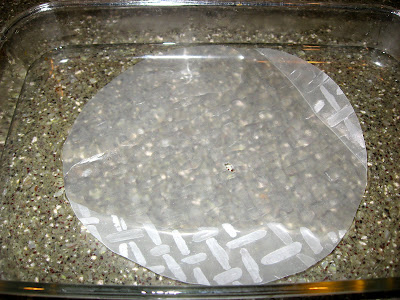Hi Jaclynn!
College is a popular time for diet transformation, as a result of new-found freedom. But you're right, it's also difficult, because suddenly your food expense is coming out of your own pocket, while you’re also responsible for managing your time: balancing studies, meals, social life, and sleep!
This is a big step, a noble commitment, and I'm impressed with your initiative!
Let me try to make it easier with a few suggestions.
Number one: PLAN AHEAD! This requires developing a routine, but it's very important in maintaining a healthy diet, regardless of whether you are an omnivore or vegetarian. It's important to make time for meals, even small ones...even snacks! Schedule them into your day, before your day begins.
Number Two: Keep your kitchen stocked. This is part of planning ahead...WAY ahead. Make a weekly meal plan, and then compose your weekly shopping list. It doesn't have to be expensive or extravagant. I started simple with themes like "Mexican Monday" or "Taco Tuesday" for dinner. If you can come up with a 7-day meal plan, just repeat it each week. That's essentially 21 different meals, so you should have plenty of variety.
Next, and possibly most importantly, snacks! In order to maintain a healthy, stable metabolism, it's actually best to graze throughout the day. Rather than sitting down to 3 big meals, try to eat 6 or 8...or even 10 times a day!
Granola bars and cereal bars are great to throw in your backpack (be mindful of the ingredients, though, and steer clear of High Fructose Corn Syrup). You can buy inexpensive granola, or make your own in the bulk section of your grocery store. Fruit leather and dried fruits are great in trail mix or plain. Baby carrots, grapes, pretzels, and popcorn are all healthy snacks (popcorn is fat free AND a whole grain).
Keep in mind that processed foods in moderation are ok. Check out my list of preferred products for suggestions, and spring for organic whenever possible.
When buying organic, remember what my Dad always says: "Pay now, or you'll pay later." Meaning that yes, organic food is a bit pricier, but not nearly as expensive as medical bills!
Lastly, prepare food ahead of time. I'll buy a package of Gimme Lean soysage and slice and cook the whole thing to be stored in the fridge. That way, if I'm crunched for time, I can pop it in the microwave for a few seconds and eat it on the go. I make breakfast muffins or trail mix cookies and keep them in an air-tight container, available for quick consumption. Sometimes, I'll make my own trail mix or granola and divide it into little baggies, so I can toss one in my backpack for school. I cut up fruits and veggies before bed, so whether I'm walking out the door, or looking for a quick snack during a study break, I don't have to think or prepare.
It's difficult to get a lot of your necessary proteins from dark leafy greens, the preferred source, when you're tight on time and money, so soy-based proteins will be your best bet while classes are in session.
When you're on break (or after you graduate), you'll want to branch out and incorporate many more fresh, raw, organic fruits and veggies (especially the dark leafy ones) into your diet. They should be your main focus.
Here is a sample menu to help make sense of this:
Breakfast: Toasted Cinnamon Raisin English Muffin with a slice of cheese and a pre-cooked soysage patty (wrapped in a napkin and eaten in the car)
Mid-Morning Snack: A granola bar and a banana
Lunch: Sushi I either made or bought the night before. If you don't like sushi, brown bag a sandwich, carrot sticks, some fruit, and a water.
Mid-Afternoon Snack: Celery sticks, topped with almond butter or (tofutti) cream cheese, and raisins
Dinner: Spaghetti with marinara and meatless balls (the Zesty Italian flavor are the best!)
Study Break Snack: Popcorn
All that being said, it's okay to eat out! It's even okay to eat out CHEAP! Many places have meatless options for the veggie on a (time) budget.
Taco Bell's 7-Layer Burrito is vegetarian and can be made vegan, if you order it "Fresco Style."
Burger King and Back Yard Burger both have veggie burgers on their menus.
Wendy's has salads and baked potatoes.
Although, politically speaking, I don't condone fast food restaurants, I understand that you have to save time and money and, as a transitional crutch, I think it's fine...once in a while.
Pizza is vegetarian and a lot of pizzerias now offer soy cheese (like Mellow Mushroom).
Mexican, Indian and Greek cuisines are all predominantly Vegetarian. If you have the choice between black beans and re-fried beans, opt for black. Avoid cheese and sour cream. Indian food is packed with protein, because of their generous use of legumes. Greek is the same: lots of lentils and chickpeas.
I know this is a lot of information; I hope it helps a bit to get you started! There are a lot of quick, easy, and inexpensive "short cuts" here that shouldn't be made habit. Just take it slow in the beginning, for the best chance at success, then you'll be ready for the next steps.
Keep me posted on your success and email me with obstacles and questions!
Namaste!
Julie





